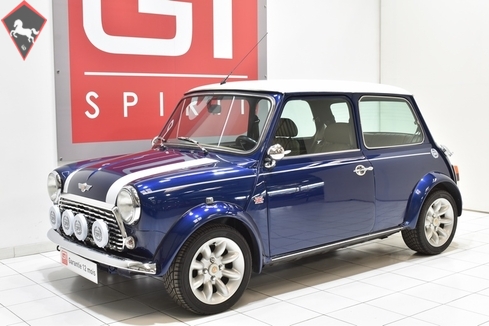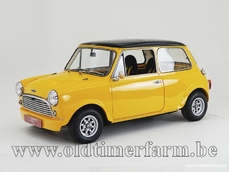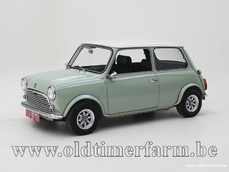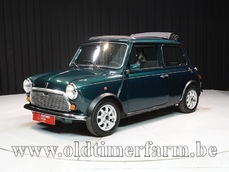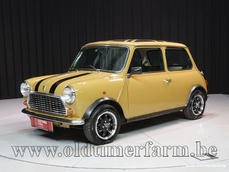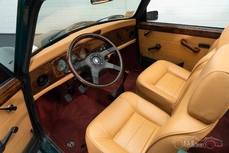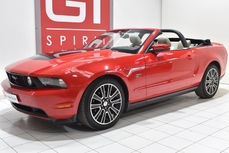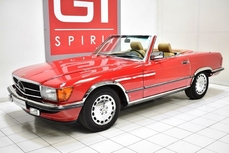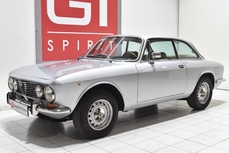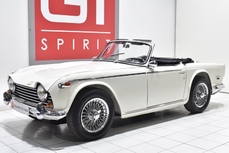Mini 1300 Mpi Sportpack 1999
General description :
* GARANTIE LÉGALE DE CONFORMITÉ 12 MOIS incluse
* REPRISES et LIVRAISON possibles
* Frais de mise à la route en sus : 690 € TTC (1/4 de carburant, passage contróle technique, préparation intérieure et extérieure)
* Service « carte grise » et « carte grise collection » (dossier FFVE inclus)
AUSTIN MINI COOPER MK7 (1996 - 2000)
Version MK7 « Sportpack »
Moteur 1.3 Mpi injection multipoint
Carnet MINI d’origine
Manuels utilisateur MINI d’origine
Double des clefs
Matching color extérieur : « Tahiti Blue JRJ »
Matching color intérieur : « Beige passepoil Black SMJ »
Factures depuis 2011 (total: 9.991€)
Restauration des bas de caisse droit + gauche en 2021 (facture: 4.920€)
Allumage électronique d’origine
Culasse stage 3
Rampe de culbuteurs à rouleaux "levée haute"
Filtre à air K&N
Silencieux d’échappement double sortie centrale en inox
2 longues portées additionnels + caches pvc MINI COOPER
2 antibrouillards additionnels + caches pvc MINI COOPER
Feu antibrouillard arriére chromé
Pack feux blancs :
- clignotants avant
- rappels de clignotant latéraux
Extensions d’aile « Sportpack » d’origine
4 jantes MINILITE en 13’’ d’origine
4 pneumatiques YOKOHAMA
4 amortisseurs KYB
Strippings et logos « COOPER » d’origine
Calandre chromée wavy "W WAY"
Union Jack Flags latéraux
Rétroviseurs obus DE LUXE
Trappe à essence chromée type Le Mans
Vitres teintées d'origine
Essuie-glaces chromés
Sellerie en cuir « Beige / passepoil Black SMJ »
Contre-portes en simili-cuir « Beige passepoil Black SMJ »
Hauts de contre portes finition type carbone
Tableau de bord 3 compteurs finition type carbone
Casquette en cuir « Beige passepoil Black SMJ »
Coquille de neiman en cuir « Beige passepoil Black SMJ »
Instrumentation de bord à fonds blanc d’origine
- horloge
- voltmétre
- manométre de température d’huile
Prétensionneurs sur ceintures avant
Volant 3 branches siglé « COOPER » d’origine
Pack aluminium intérieur :
- poignées de porte extérieures
- poignées de portes intérieures
- manivelles de léve vitres
- pommeau de levier de vitesse
- poignée de frein à main
- pédalier aluminium
Seuils de porte aluminium siglés MINI COOPER
Moquettes coloris « Black »
Roue de secours d’origine
Anti-démarrage d'origine
Coupe circuit
Manivelle
Cric
Historique du modéle :
1959, en pleine crise pétroliére BMC (British Motor Corporation) demande alors à son bureau d’étude de Longbridge de concevoir une petite automobile économique.
Le concept présenté est radicalement opposé à ses concurrentes de l’époque: la VOLKSWAGEN Coccinelle, la FIAT 500 et la RENAULT Dauphine, toutes trois équipées d'un groupe motopropulseur arriére.
En effet, choix a été fait de positionner le moteur à l’avant, de greffer la boîte de vitesse en dessous de celui-ci afin de favoriser l’habitabilité offerte aux passagers.
Le succés de la MINI sera planétaire et sa carriére sportive digne des plus prestigieuses GT.
Au fil des années de nombreuses évolutions verront le jour.
La version Mark 6 sera la premiére a adopter un systéme d’injection ainsi qu’un catalyseur à partir de 1992.
L'ultime version MK7 Cooper S "1300 MPi SportPack" regroupe les derniéres améliorations : injection multipoints, radiateur d’eau frontal, airbag et barres de sécurité dans les portes, kit carrosserie spécifique avec élargisseurs d'ailes, une sellerie cuir, des jantes de plus grand diamétre (13 pouces) et un échappement central.
Le bloc moteur de 1275 cm3 conserve ses 63 chevaux malgré la catalysation.
Carrosserie / Extérieur :
Le modéle présenté ici est une AUSTIN MINI Cooper S MK7 "Sportpack" de Juin 1999 dans son coloris « Tahiti Blue JRJ » d’origine (matching color).
La peinture affiche une profondeur et une brillance excellente.
Aprés un lustrage pro réalisé à l’orbitale par notre atelier, nous avons noté la présence d’un petit éclat de vernis au sommet de la porte passager; trois petits coups sur la malle de coffre et une trace de frottement sur l'extension d'aile arriére droite ainsi qu’un petit défaut sous peinture sur la baie de pare-brise.
Cet exemplaire est équipé d'une calandre vintage chromée wavy "W Way" en excellent état.
Les pare chocs chromés sont parfaitement alignés et en excellent état.
Les optiques et les feux arriére sont également en excellent état, ainsi que les longues portées et antibrouillards avant et arriére.
L'ensemble est parfaitement fonctionnel.
Les caches longues portées et antibrouillards MINI COOPER en pvc sont en excellent état.
Les 4 jantes "MINILITE" en 13’’ d'origine sont en trés bon état, sans trace de choc ni déformations.
Nous avons relevé quelques traces de frottement et griffures superficielles sur les contours arriére .
Les 4 pneumatiques YOKOHAMA affichent une usure inférieure à 60%.
Cet exemplaire a conservé sa roue de secours d’origine en tóle ainsi que son cric et sa manivelle.
Parmi les équipements et accessoires "Carrosserie / extérieur" dont cet exemplaire est doté, nous avons noté: la calandre chromée wavy 'W way", les essuie-glaces chromés, les rétroviseurs obus DE LUXE, la trappe à essence type « Le Mans », l’antidémarrage à télécommande, les longues portées les antibrouillards équipés de leurs caches MINI COOPER ainsi que le pack feux blancs (clignotants avant et répétiteurs latéraux).
Habitacle :
L’intérieur en cuir coloris « Beige passepoil Black SMJ » a conservé sa stricte configuration d’origine et apparaît en excellent état de présentation.
Nous avons relevé un petit accroc sur le bourrelet extérieur du dossier passager.
L’ensemble apparaît en trés bon état, sans trace d’usure ni décoloration.
Le tableau de bord 3 compteurs finition type carbone et les hauts de contre-portes assortis sont en excellent état.
La casquette de tableau de bord et la coquille de neiman en cuir « Beige passepoil Black SMJ » sont également en excellent état.
L’ensemble de l’instrumentation de bord à fond blanc est parfaitement fonctionnel: tachymétre, compte-tours, jauge à essence, température d’eau, voltmétre, température d’huile ainsi que l’horloge sont en parfait état.
Cet exemplaire est équipé de son volant 3 branches d'origine siglé « MINI COOPER » en excellent état
Le pommeau de vitesse en aluminium et le levier de frein à main sont en excellent état.
Cet exemplaire est équipé d'un kit aluminium incluant : poignées de porte extérieures, poignées de porte intérieures, poignée de frein à main et manivelles de léve vitres.
L'ensemble est en excellent état.
Les contre portes en simili-cuir cuir « Beige passepoil Black SMJ » sont en trés bon état, sans trace d’accés à bord ni décoloration.
Le kit moquettes coloris « Black » et les seuils de porte aluminium siglés MINI COOPER sont en excellent état.
Parmi les accessoires "habitacle / intérieur" dont cet exemplaire est équipé, nous avons noté : la sellerie cuir coloris « Beige passepoil Black SMJ », la casquette de tableau de bord et la coquille en cuir coloris « Beige passepoil Black SMJ », le pédalier aluminium ainsi qu'un kit aluminium incluant : poignées de portes intérieur / extérieur, manivelles de léve vitres , pommeau de levier de vitesse et poignée de frein en aluminium.
Châssis :
La mise sur le pont confirme une caisse saine sans trace d’accident ni de corrosion structurelle apparente.
Les fondamentaux : planchers, longerons, bas de caisse et passages de roue sont en bon état.
Les bas de caisse droit et gauche ont été restaurés en 2021 (facture: 4.920€).
Réserve d'usage: par principe nous ne pouvons garantir la perfection des alignements au delà de leur bon état visuel et fonctionnel validé lors de l’essai sur route et de la mise sur le pont.
Lors de l'essai dynamique, nous n'avons relevé aucun bruit parasite anormal au niveau de la caisse ou des trains roulants (rotules, silentblocs...).
La tenue de route est améliorée par la présence de 4 amortisseurs KYB.
Le freinage est équilibré, stable et mordant, sans vibrations ni bruits anormaux.
Les disques et plaquettes de frein avant affichent une usure inférieure à 30%.
Les tambours arriére sont parfaitement fonctionnels et exempts de traces de suintement.
Le passage au contróle technique réalisé avant livraison confirmera le bon fonctionnement de l’ensemble.
Moteur / Transmission :
La mécanique fonctionne parfaitement.
La prise des compressions moteur ainsi que l'essai routier réalisés par notre atelier confirment un bloc en bonne santé.
Le 4 cylindres démarre immédiatement, sans fumées ni bruits suspects et le ralenti est stable ainsi que le confirme la vidéo 360° réalisée moteur tournant et disponible en début de diaporama.
Le ralenti est stable et une fois en température, le moteur prend ses tours sans à coups ni surchauffe.
Cet exemplaire est équipé d’une culasse stage 3 et d’une rampe de culbuteurs à rouleaux "levée haute", d’un filtre à air KN et d'un échappement Inox à double sortie centrale.
Le rendement moteur s'en trouve nettement amélioré et la sonorité du 4 cylindres 1275cm3 renforcée.
La boîte mécanique rentre les 4 rapports sans accrocs au niveau des synchros.
Le grip de l’embrayage est bon.
Cet exemplaire est équipé d'un coupe circuit.
Comme souvent sur ces mécaniques anciennes l’étanchéité moteur, boîte, pont reste moyenne.
La Cooper S 1300 Mpi représente l'ultime évolution de la MINI. A ce titre il s'agit déjà d'un collector.
Si les voies larges et les jantes en 13'' pénalisent quelque peu le comportement et les performances par rapport au modéle originel, la Cooper S reste assurément la plus sexy et la mieux équipée de toute la gamme.
De plus le 1300 cm3 Rover injection associé à une boite longue permet éventuellement d'envisager un usage régulier voir quotidien pour les plus passionnés, moyennant un confort trés spartiate.
1999 Mini 1300 Mpi Sportpack is listed for sale on ClassicDigest in La Boisse by GT SPIRIT for Not priced.
Car Facts
Car type : Car Make : Mini Model : 1300 Model Version : Mpi Sportpack Engine size : 1.3 Model Year : 1999 Location : Prés Seigneurs Vehicle Registration : Undefined
Not priced
People who viewed this Mini 1300 also viewed similar Mini listed at ClassicDigest
Other cars listed for sale by this dealer
About Mini
The Mini is indeed an iconic car that revolutionized the automotive industry and set the standard for compact cars. Here's a brief history of the Mini, its development, and some of the key versions of the classic Mini:1. Origins and Development:
Founder and Designer: The Mini was designed by Sir Alec Issigonis, a British-Greek automotive engineer.
Introduction: The Mini was officially introduced by the British Motor Corporation (BMC) in 1959.
Innovative Design: Issigonis' design featured a transverse engine, front-wheel drive, and a compact layout, maximizing interior space.
2. Classic Mini Models:
Mark I (1959–1967):
Mini Cooper (1961): The performance-oriented Cooper version, developed in collaboration with racing legend John Cooper, was introduced.
Mark II (1967–1970):
Minor design changes, including a redesigned grille.
Mark III (1969–2000):
Introduction of the Clubman and Clubman Estate variants.
Further design updates, including a more rounded front grille.
3. Mini Cooper S:
Performance Variant: The Mini Cooper S, particularly the Mk I version, became famous for its success in rally racing, winning the Monte Carlo Rally multiple times.
4. Mini Moke:
Utility Vehicle: The Mini Moke was a utility vehicle based on the Mini platform, featuring an open-top design. It gained popularity in various warm-weather locations.
5. Mini Countryman:
Extended Version: The Mini Countryman was introduced as a longer and more practical version of the classic Mini. It featured a rear-hinged door for easier access to the rear seats.
6. End of Production:
Later Years: Production of the classic Mini continued until the year 2000.
Final Editions: The last classic Mini rolled off the production line on October 4, 2000, marking the end of an era.
7. BMW Era and New MINI:
BMW Acquisition: BMW acquired the rights to the Mini brand and introduced the new MINI in 2001.
Modern Interpretation: The new MINI retained some design cues from the classic but featured modern technology and safety standards.
8. Legacy and Influence:
Cultural Icon: The classic Mini became a cultural icon, symbolizing British design and efficiency.
Influence on Compact Cars: The Mini's layout and design principles influenced the development of compact cars for decades to come.
The Mini's impact on the automotive industry goes beyond its compact size; it represents a design philosophy that prioritizes efficiency, space utilization, and a fun driving experience. The classic Mini's enduring popularity is a testament to its timeless design and innovative engineering.
